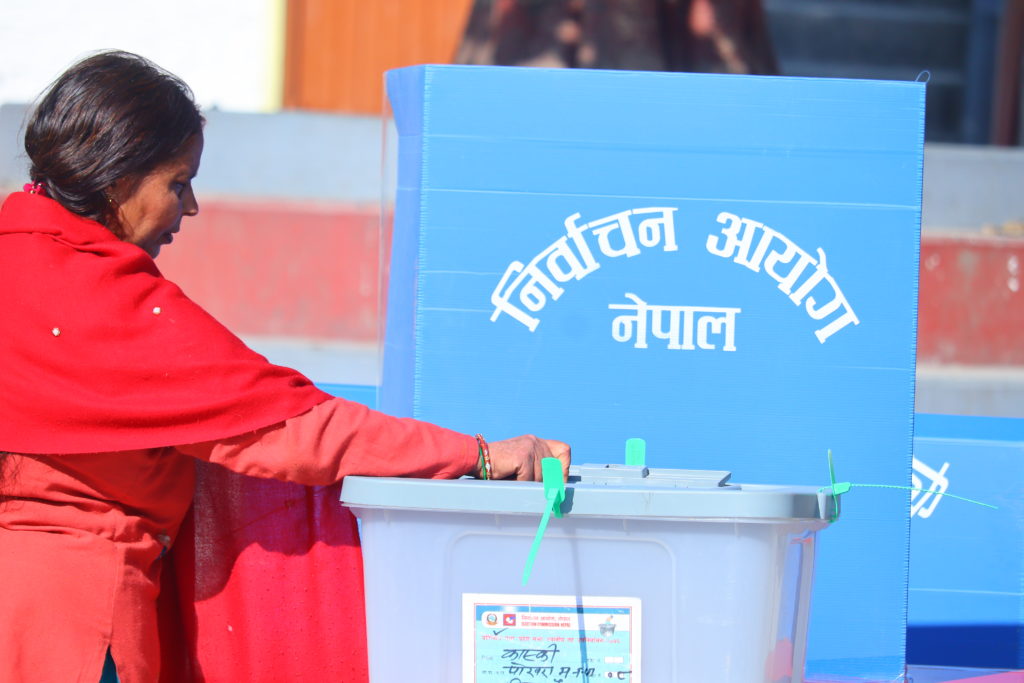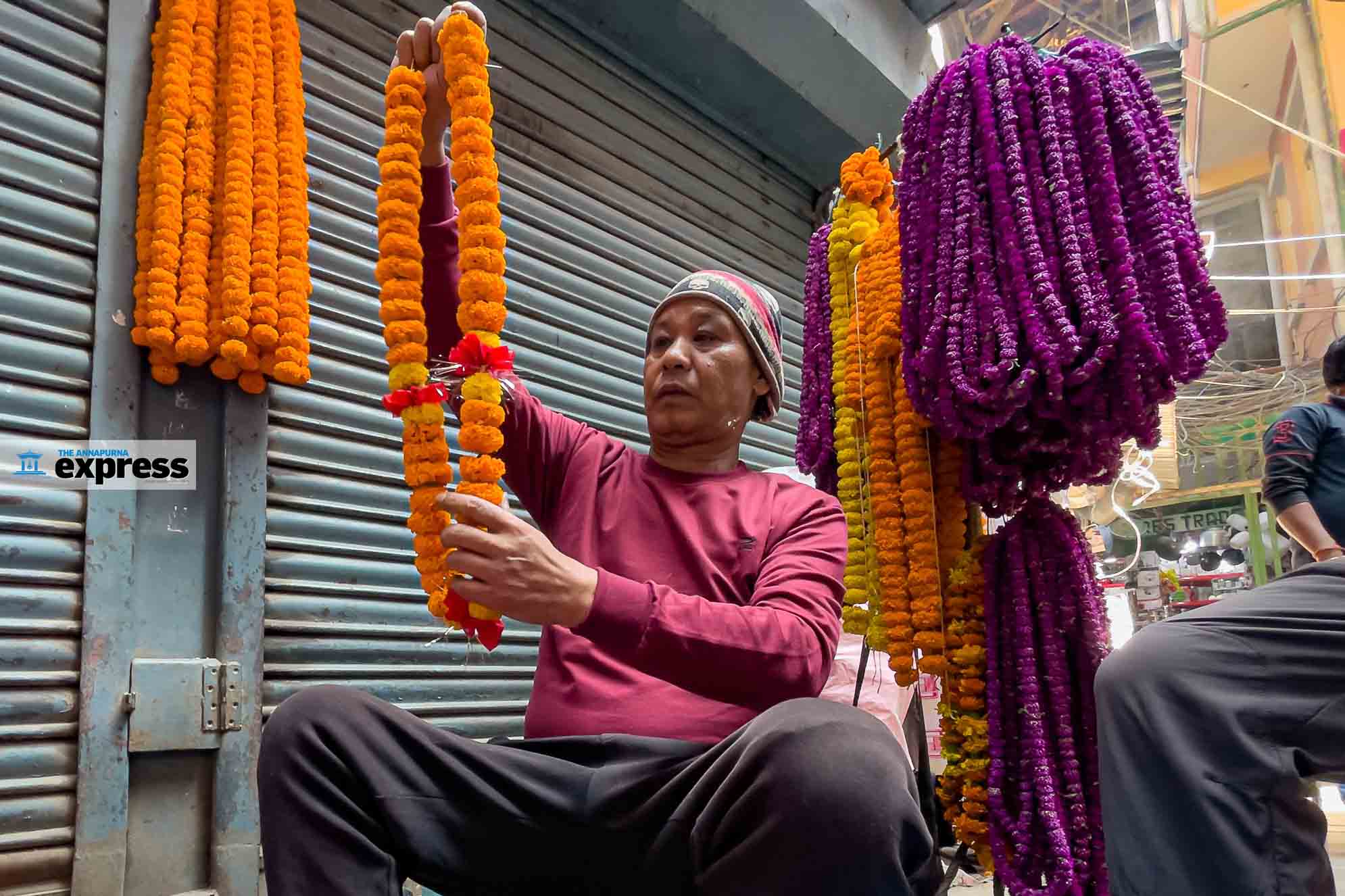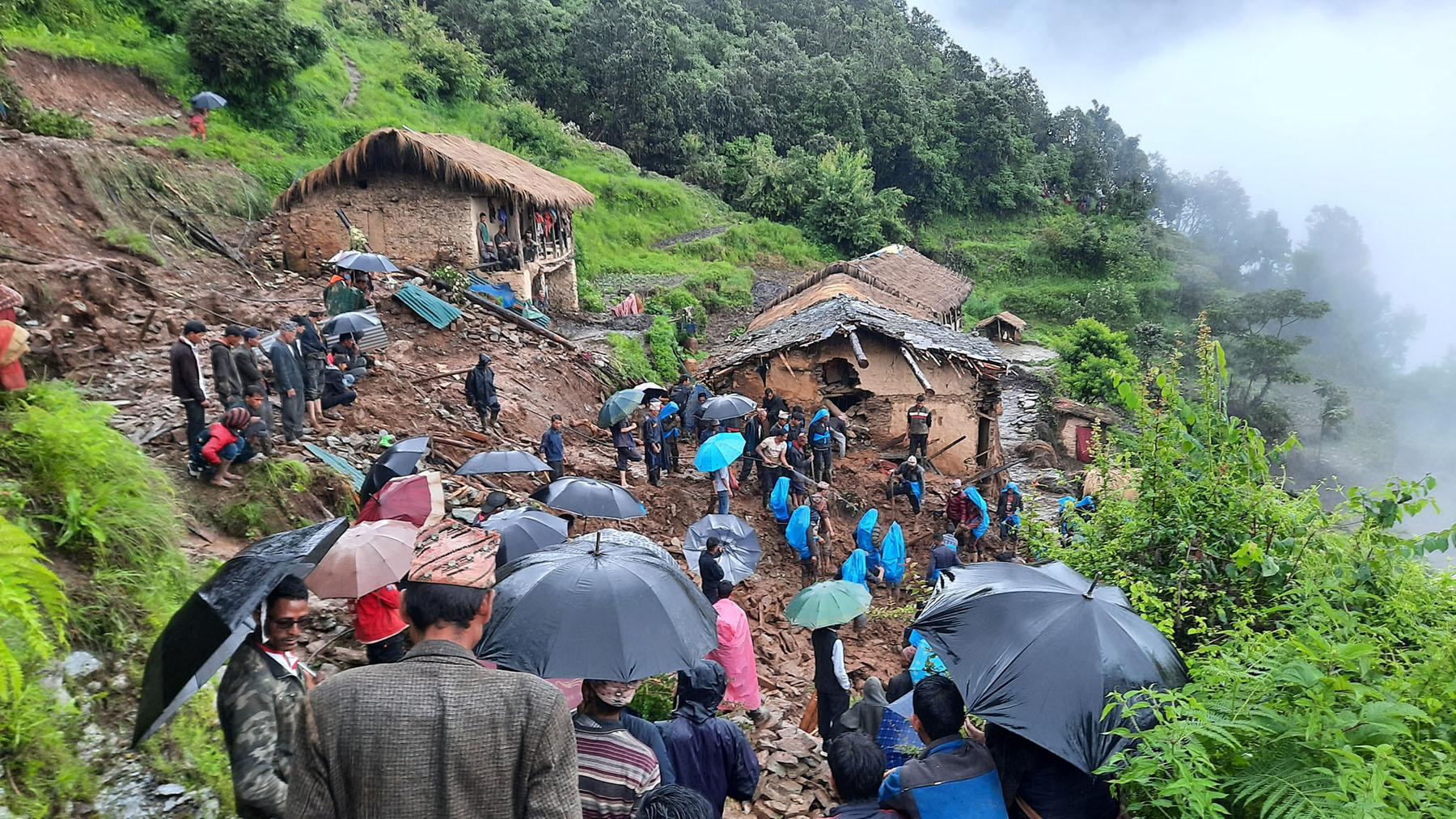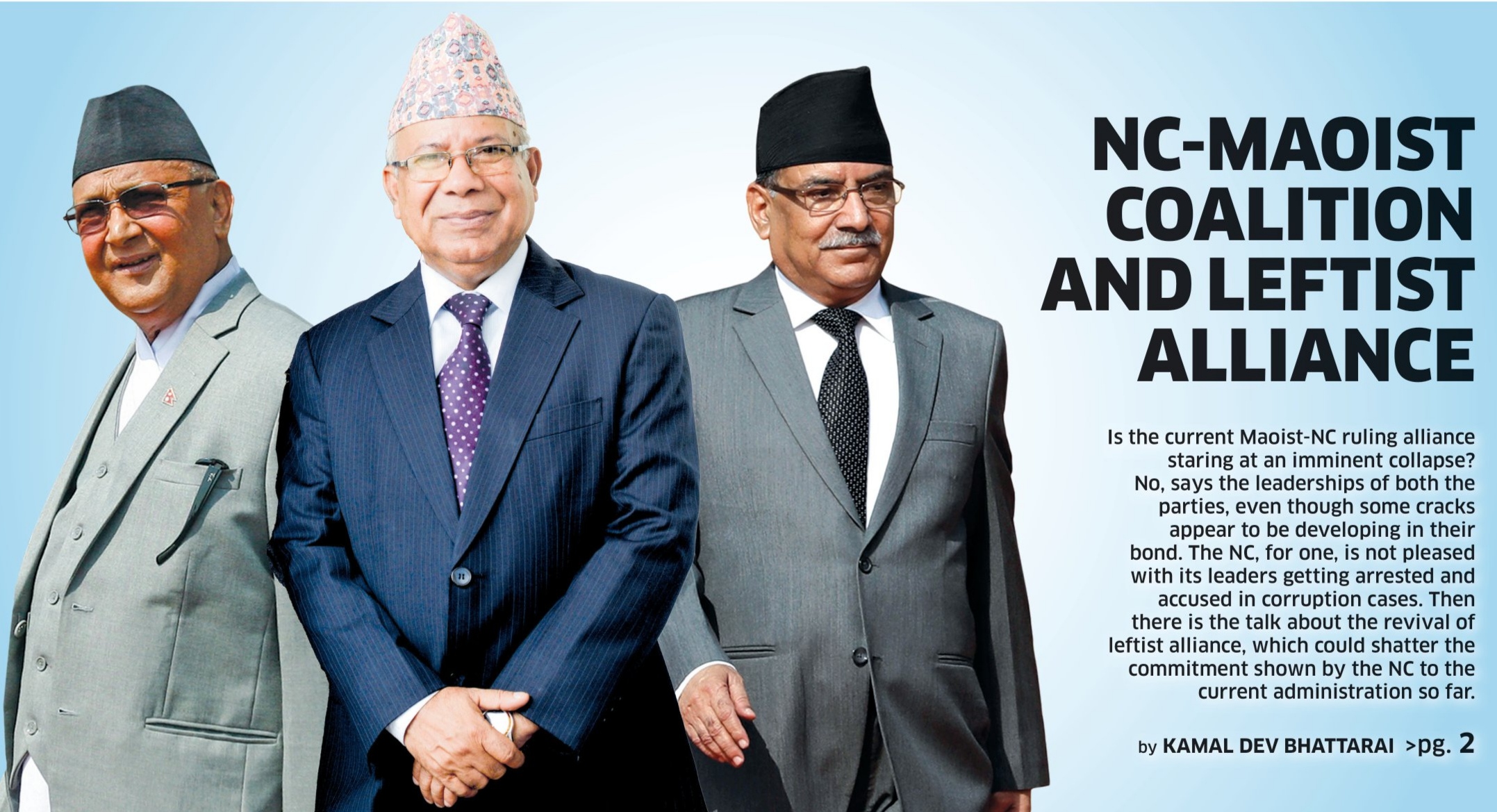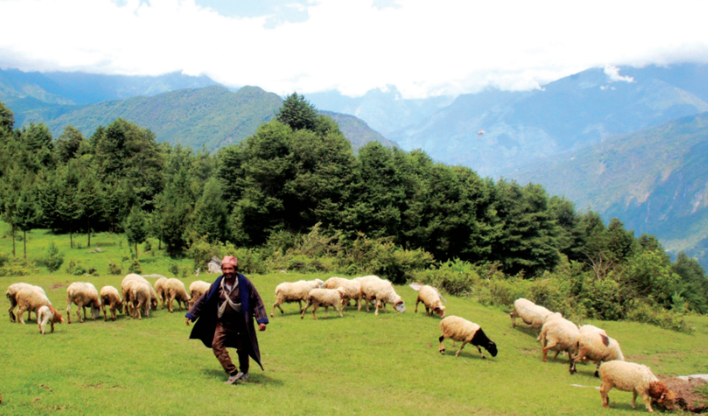Silver linings in the dark sky
Since 2013, Nepali airlines have been banned from flying into Europe for failing to keep up with the international air safety protocols. The decision to blacklist Nepali airlines from entering the European skies was taken after a series of plane crashes that occurred particularly in 2010, 2011 and 2012. Nepal has since been urging the European Commission to delist its airlines from its blacklist stating that there has been a substantial improvement in aviation safety. Now, Nepali officials seem hopeful that the commission will lift the ban soon. In the first week of October, a three-member technical team from the European Union Aviation Safety Agency visited Nepal to discuss the aviation safety issue. Besides holding discussions with the officials from Civil Aviation Authority of Nepal (CAAN), the team also visited some private airlines companies. The team is set to seek further clarification from CAAN on some issues before submitting its report to the commission, which will then take a final call on whether to lift the ban. Officials in Nepal are buoyed from their talks with the technical team. Jagannath Niraula, spokesperson for CAAN, says the EU representatives appreciated the progress made by Nepal in the areas of aviation security. “This time we are 99 precent optimistic that the commission will remove us from its blacklist and our airlines can fly to European skies which will be a big boost to our aviation industry.” The audit reports show that Nepal has indeed made improvements in aviation safety. In April, a report by the Universal Safety Oversight Audit Program, under International Civil Aviation Organization (ICAO), showed that Nepal’s air safety ratings have improved significantly, achieving a 70.1 percent score, which was 66.76 percent in 2017. The score was eight percent more than the global average of 67.2 percent. Audits were conducted in 2009, 2016 and 2017 respectively. According to CAAN, Nepal made significant progress in its oversight capability since the initial audit of 2009. In 2018, ICAO awarded Nepal with Council President Certificate in recognition of its achievement in resolving its safety oversight deficiencies and implementing other international safety standards. CAAN officials have since been doubling down on their effort to remove Nepali airlines from the EU blacklist. But there is one remaining issue that remains unresolved. Despite improvements in air safety, CAAN has failed to make institutional reforms. Splitting CAAN into two entities, one a regulator and the other a service provider, is a long due issue. A bill in this regard is pending in Parliament and political parties have not prioritized the bill. Some fear the failure to break up CAAN could delay the delisting process. But CAAN officials, by and large, seem confident that the improvement made in aviation security is good enough for the EU to delist Nepali airlines from its blacklist. CAAN’s Aviation Security Report 2021 states that in the past 10 years, fatalities related to airplanes have registered a continuous steep drop, though the same for helicopter accidents has increased between 2011 and 2021. During the period of 2011 and 2020, the highest number of plane accidents was recorded in 2016. There were four airline accidents that year. Likewise, the highest number of fatalities was observed in 2012 when 34 lives were lost. In 2020, there was one accident without any fatalities. The improvement in aviation safety was in large due to the four-year Nepal Aviation Safety Plan implemented by CAAN in 2018. The plan was in line with the Global Aviation Safety Plan and Regional Aviation Safety Plan, which identified several areas of safety and took measures to address them.
Satya Mohan Joshi obituary: A long and fulfilling life
Satyamohan Joshi, Nepal’s most respected historian and cultural scholar, has passed away. He was 103. He was famously known as the ‘Man of the Century’. Though Joshi had been suffering from prostate and heart-related health issues for a while now, the cause of death was declared to be dengue. He was admitted to the Intensive Care Unit at KIST Medical College and Teaching Hospital on Oct 10 and that was where he took his last breath on Oct 16. Born and raised in Lalitpur, Joshi studied at Durbar High School in Kathmandu and then received a bachelor’s degree from Tri Chandra College. But Joshi was a student for life. Even as he was nearing 100, he could be found going through books on history and culture. He was quoted and interviewed in the media when he was well into his 90s. One can only imagine how driven and energetic he must have been as a youth. He firmly believed Nepali culture, art, and language needed to be preserved. He is the only one to have explored Karnali while researching the origination of the Nepali language. He established Rastriya Naach Ghar in Kathmandu, the Archeological Garden in Patan, the Archeological Museum in Taulihawa, and the National Painting Museum in Bhaktapur. They were his ways of preserving the different aspects of the Nepali culture. There was a brief moment in his life, during the 1960 Nepal coup d’état, when he visited China and conducted his research on Nepal’s famous sculpture ‘Arniko’. He came back to Nepal and went on to establish the Araniko White Dagoba Gallery in Kirtipur which showcases the various artifacts related to the great sculpture. With more than 60 writings published in his name, Joshi is one of the biggest contributors in Nepali art and literature scene. He was the only three-time winner of the Madan Puraskar—the highest literary honor in Nepal—and was also given an honorary doctorate in literature for his contribution in art, folk culture, and the history of Karnali. Chiri Babu Maharjan, mayor, Lalitpur Metropolitan City, expressed his condolences on arriving at the hospital following Joshi’s death. “His contribution towards protecting Nepali culture, history, and language, will forever be acknowledged and appreciated,” he said. “In a way, he was the sole protector of our heritage.” Before his demise, Joshi had signed an agreement with KIST Medical College and Teaching Hospital. He wanted to donate his body to be used in medical education. His son Anu Raj Joshi said it was difficult for the family, although his father had already made the call. The family ultimately decided not to cremate the body and donate it as per Joshi’s wishes, after a public viewing. Prime Minister Sher Bahadur Deuba paid his respects and the government declared a one-day holiday to mourn his death. Joshi’s life was an example of a well-lived one. People were in awe of him, not only for his historical and cultural expertise but for the sheer authority he exuded through his voice and presence. Birth: 12 May 1920, Lalitpur Death: 16 Oct 2022, Lalitpur
Pawan Golyan: Transforming Nepal’s agriculture
Quick facts
Born on July 1958 in Morang
Went to Satyanarayan High School, Morang
Graduated from Mahendra Morang Campus, Morang
Got involved in organic agriculture as a part of CSR in 2017
Husband of Surabhi Golyan
Father to Jaya Golyan and Akshay Golyan
 I started limiting my involvement in my businesses after I reached 50. And at 60 I was a retired man, unsure of what to do with my free time. I had always wanted to share my experience and knowledge with youths, so I began attending youth-centered seminars and workshops.
My other interest was agriculture. Two-thirds of Nepalis rely on agriculture and yet, it is the most ignored field. So I wanted to assist our farmers and help the agriculture industry. As a part of corporate social responsibility (CSR) of the Golyan Group, I started a program in 2017 that taught organic farming practice in a small village of Jhapa.
Widespread use of pesticides in modern farming culture is harming both farmers and consumers. Many farmers don’t know how to safely use pesticides, which has the potential of causing various diseases including cancer.
For consumers, too, agro products grown with pesticides are harmful. In Kathmandu, there are very few people in their 30s who have no health complications. This, I believe, is due to the food they eat.
With the organic farming program, my aim was not just limited to helping farmers grow healthy food products but also reduce our import reliance on agro products.
In a short time, the project was expanded to 25 villages in eastern Nepal and it engaged 1,000 farmers. But there was one problem. Despite good production, the organic products could not find a proper market. The farmers were also not getting the right price for their produce, as our reliance on imported agro products remained unchanged. Imported products were preferred over domestic ones.
There was a need to directly connect our farmers to consumers. For this, Mato was established in 2018. The company promotes organic preservative-free products grown by local farmers. The brand represents earth, nature and purity.
Mato products are one hundred percent organic, born out of an empowering vision to collaborate with farmers and discover the exciting potential of Nepal’s agricultural diversity. The company helps local farmers with packaging and branding so that they can run a sustainable agriculture business.
Under Mato, we bought 354,034 square meters of land and started contract farming. Before finalizing any products, we carry out a thorough research and try to grow those crops that complement farmers.
[caption id="attachment_32786" align="alignnone" width="300"]
I started limiting my involvement in my businesses after I reached 50. And at 60 I was a retired man, unsure of what to do with my free time. I had always wanted to share my experience and knowledge with youths, so I began attending youth-centered seminars and workshops.
My other interest was agriculture. Two-thirds of Nepalis rely on agriculture and yet, it is the most ignored field. So I wanted to assist our farmers and help the agriculture industry. As a part of corporate social responsibility (CSR) of the Golyan Group, I started a program in 2017 that taught organic farming practice in a small village of Jhapa.
Widespread use of pesticides in modern farming culture is harming both farmers and consumers. Many farmers don’t know how to safely use pesticides, which has the potential of causing various diseases including cancer.
For consumers, too, agro products grown with pesticides are harmful. In Kathmandu, there are very few people in their 30s who have no health complications. This, I believe, is due to the food they eat.
With the organic farming program, my aim was not just limited to helping farmers grow healthy food products but also reduce our import reliance on agro products.
In a short time, the project was expanded to 25 villages in eastern Nepal and it engaged 1,000 farmers. But there was one problem. Despite good production, the organic products could not find a proper market. The farmers were also not getting the right price for their produce, as our reliance on imported agro products remained unchanged. Imported products were preferred over domestic ones.
There was a need to directly connect our farmers to consumers. For this, Mato was established in 2018. The company promotes organic preservative-free products grown by local farmers. The brand represents earth, nature and purity.
Mato products are one hundred percent organic, born out of an empowering vision to collaborate with farmers and discover the exciting potential of Nepal’s agricultural diversity. The company helps local farmers with packaging and branding so that they can run a sustainable agriculture business.
Under Mato, we bought 354,034 square meters of land and started contract farming. Before finalizing any products, we carry out a thorough research and try to grow those crops that complement farmers.
[caption id="attachment_32786" align="alignnone" width="300"]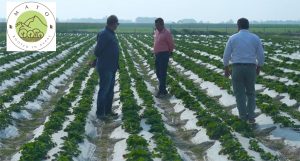 Pawan Golyan (left) and team at Jhapa for the farm visit of organically produced strawberries grown by the local communities | Photo: Mato[/caption]
Our plan to buy an additional 505,763 square meters of land, which was halted due to the Covid-19 pandemic, is also finally moving ahead. Over the years, Mato has reached all seven provinces and currently produces 122 organic products. We are helping local farmers grow organic products and give them the market.
A farmer from Kathmandu had a small business in ghee production. He ran his operation from his home with limited equipment. Earlier, he used to produce around five kilograms of ghee per day. With Mato’s support, he was able to turn his business into a cottage industry. We helped him get a license from the Department of Food Technology and Quality Control (DFTQC), as well as concessional loans to increase his production.
Obtaining the DFTQC license and concessional loans can be a hectic process for ordinary farmers. So, Mato is there to help out farmers in every step. This is just a representative example of one farmer. We have been doing the same with so many farmers across the country.
Mato also advocates for food safety. These days, we barely find a food product that is healthy. Food items are plied with preservatives and kept in cold storage for a long time before they reach the market and by that time, they have lost both their taste and nutritional values.
Take honey for example. Most of the honey brands sold in the market have almost 30 to 40 percent of sugar, which acts as a preservative. Is it safe for consumers to eat this much sugar?
I believe that people need food literacy. Most of us buy our fruits, vegetables and other food items based on their appearance and packaging. We don’t think about their quality. We must do our research before buying any agro products. This will not only promote the health of consumers but also reduce and replace imported agro products.
For agriculture, there is a wheel with a set of must-do things. We have almost completed the wheel and we are now putting that wheel on the right track. As soon as we start rolling, we will have sustainable agro-processing.
I have been continuously lobbying for effective policies for Nepali agriculture and farmers. I have participated in many ministerial programs and shared my experience working in this field. For a farmer, soil testing, advanced quality seeds, irrigation, equipment and compost fertilizer are the basic needs. Not only the government, the private sector too should help farmers with their basic needs.
As one of the first start-ups established to assist farmers, Mato has always advocated for policies aimed at reducing or import reliance. We possess the capacity to feed the country, but our over-reliance on imports have put our farmers and their products in the shadows.
Pawan Golyan (left) and team at Jhapa for the farm visit of organically produced strawberries grown by the local communities | Photo: Mato[/caption]
Our plan to buy an additional 505,763 square meters of land, which was halted due to the Covid-19 pandemic, is also finally moving ahead. Over the years, Mato has reached all seven provinces and currently produces 122 organic products. We are helping local farmers grow organic products and give them the market.
A farmer from Kathmandu had a small business in ghee production. He ran his operation from his home with limited equipment. Earlier, he used to produce around five kilograms of ghee per day. With Mato’s support, he was able to turn his business into a cottage industry. We helped him get a license from the Department of Food Technology and Quality Control (DFTQC), as well as concessional loans to increase his production.
Obtaining the DFTQC license and concessional loans can be a hectic process for ordinary farmers. So, Mato is there to help out farmers in every step. This is just a representative example of one farmer. We have been doing the same with so many farmers across the country.
Mato also advocates for food safety. These days, we barely find a food product that is healthy. Food items are plied with preservatives and kept in cold storage for a long time before they reach the market and by that time, they have lost both their taste and nutritional values.
Take honey for example. Most of the honey brands sold in the market have almost 30 to 40 percent of sugar, which acts as a preservative. Is it safe for consumers to eat this much sugar?
I believe that people need food literacy. Most of us buy our fruits, vegetables and other food items based on their appearance and packaging. We don’t think about their quality. We must do our research before buying any agro products. This will not only promote the health of consumers but also reduce and replace imported agro products.
For agriculture, there is a wheel with a set of must-do things. We have almost completed the wheel and we are now putting that wheel on the right track. As soon as we start rolling, we will have sustainable agro-processing.
I have been continuously lobbying for effective policies for Nepali agriculture and farmers. I have participated in many ministerial programs and shared my experience working in this field. For a farmer, soil testing, advanced quality seeds, irrigation, equipment and compost fertilizer are the basic needs. Not only the government, the private sector too should help farmers with their basic needs.
As one of the first start-ups established to assist farmers, Mato has always advocated for policies aimed at reducing or import reliance. We possess the capacity to feed the country, but our over-reliance on imports have put our farmers and their products in the shadows.
 About him
Jaya Golyan (Daughter)
About him
Jaya Golyan (Daughter)
 My father has always been a person of few words, but he is an epitome of values. His greatest values are hardworking, resilience, vision and dedication. I grew up seeing him live with these values. He wakes up everyday with the same passion and dedication for his work. I have never seen him complain. My father has a vision for Nepal and he is going to make that come true.
Mahesh Pokharel (Colleague)
My father has always been a person of few words, but he is an epitome of values. His greatest values are hardworking, resilience, vision and dedication. I grew up seeing him live with these values. He wakes up everyday with the same passion and dedication for his work. I have never seen him complain. My father has a vision for Nepal and he is going to make that come true.
Mahesh Pokharel (Colleague)
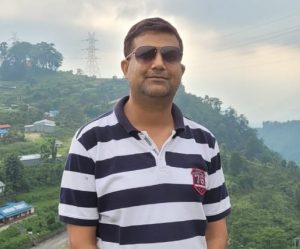 I have been working with Pawan sir for the past two decades. He is a philanthropist more than a businessperson. His concerns over CSR (especially in agriculture) always amaze me. Apart from that, he is among the very few employers who cares about and advocates for his employees. With his leadership, we have been able to make our workplace inclusive as our company, Reliance Spinning Mills, has over 1,500 women and people from the marginalized community. He also stopped the trend of hiring foreign employees and trained Nepali workers and hired them instead.
Charles Mendies (Friend)
I have been working with Pawan sir for the past two decades. He is a philanthropist more than a businessperson. His concerns over CSR (especially in agriculture) always amaze me. Apart from that, he is among the very few employers who cares about and advocates for his employees. With his leadership, we have been able to make our workplace inclusive as our company, Reliance Spinning Mills, has over 1,500 women and people from the marginalized community. He also stopped the trend of hiring foreign employees and trained Nepali workers and hired them instead.
Charles Mendies (Friend)
 Pawan is one of my closest friends, who has always been there for me during my highs and lows. Aside from his friendship, I admire his love for the country. He is a true patriot. He has always taught his family members, friends and colleagues to contribute for the better of the country. He believes that God has blessed Nepal with everything and it is up to us to pour our love and dedication to the country.
Pawan is one of my closest friends, who has always been there for me during my highs and lows. Aside from his friendship, I admire his love for the country. He is a true patriot. He has always taught his family members, friends and colleagues to contribute for the better of the country. He believes that God has blessed Nepal with everything and it is up to us to pour our love and dedication to the country.
Between a rock and a hard place
As of early morning, October 9, Dipak GC, 34, of Surkhet district remains trapped in a landslide (rockslide?) at Chumnubri rural municipality-6, Gorkha district, per an Annapurna Post report that quoted municipality Chair Nima Lama. Not for an hour or two, not even for a day but for four long days. When in a difficult situation, four days appear like eternity, with or without Albert Einstein’s theory of relativity. The report shows a moving picture of GC stuck beneath an outcrop of massive boulders. How did GC land in that unenviable position in the first place? Per the report, the construction worker got caught in the landslip while returning from Chekampar, one of his work stations along with Chumchet, and had his left leg broken. Per the report, some locals from Keraunja happened to see this man caught in a massive landslide site (at Lokpa) with a span of about 800 meters taking refuge beneath boulders, on October 08. Apparently, he had been without food and water for three days. After getting this information, Sherap Gurung and his brother Tashi Dorje rushed to the site with edibles and medicine (brufen and moov) for pain relief, received from health workers with instructions for use. After giving him instructions for the use of medicine, the two locals rushed back with the victim’s fervent appeal for immediate rescue. Apart from food, water and medicine, the stranded youth is in need of immediate rescue as his broken leg has started stinking, per the report that quoted Lama as saying that efforts to airlift him are underway. The Annapurna Post report further points, quoting Chumnubri rural municipality Chair Lama: Around 50 foreign trekkers remain stuck at Chumnubri rural municipality ward numbers 4 and 6 in the Manaslu region for four days following incessant rains that have triggered landslides. The report quotes Chair Lama: Yesterday, two helicopters rescued tourists stuck in Pewa. Around 50 still remain stuck. Talks are on with the District Administration Office, the Home Ministry and the Nepali Army for the rescue of the stranded tourists. The report quoted tourist guide Sane Gurung: Some tourists have their visas about to expire, while some others have run out of money. Most of the tourists are old. They are in dire straits. Gorkha is not the only highland district in the eye of natural disasters like rainfall and landslides, unheard of phenomena on the lap of the Himalayas even at the start of the 21st century. Rastriya Samachar Samiti reported the death of seven members of a family in an incessant rainfall-triggered landslide that buried their house at Barkotebada, Kanaksundari rural municipality-5, Jumla, on Saturday (October 08). Per the report, rainfall has blocked/damaged roads in many places in the highland district. Downhill, The Rising Nepal (TRN) reported on October 9 that floods resulting from an ‘unprecedented rainfall’ have caused significant damage to the 35 KW Inglekhola micro hydropower station in Gurja, Dhaulagiri rural municipality-1 (Myagdi district), plunging 265 households in Gurja into darkness. Per the report, rainfall has also blocked Beni-Darbang and Beni-Jomsom roads. According to the report that quoted local residents, hills near Gurja village have been experiencing snowfall since Friday morning, a never-before-seen phenomenon in the month of October, at least in the living memory of those quoted. In the southern plains of Nepal, rainfall-triggered floods have caused huge loss of lives and properties. As per a recent TRN report, a rain-swollen Narayani river has flooded over 100 houses at Baguban of Binayi Tribeni rural municipality-1 and at Seheri, Bhutaha and Prasauni in Madhyabindu municipality in East Nawalparasi district. The report quoted chair of the rural municipality, Ghana Shyam Giri: At least 70 houses have been submerged at Baguban, and over three dozen at Seheri, Bhutaha and Prasauni. Many victims at Baguban were trapped in their houses and waiting for rescue. Other districts in the plains like Bardiya, Banke, Dang, Rupandehi and West Nawalparasi are faring no better. Incessant rainfall, which triggered floods and landslides resulting in significant loss of lives and properties including in the Kathmandu Valley, is a new phenomenon for the country around this time of the year. Hile Dashain (a muddy Dashain resulting from the rains) is sometimes heard in casual conversation with elders but death and devastation of this scale towards the end of the monsoon season was quite unimaginable. The country was ill-prepared to deal with natural disasters this time as well. Once in a while, the Weather Forecast Division would issue flood alerts to local communities living close to river banks, appealing them to move to safer places. For most of the afflicted lot, those safer places were nowhere to be found. As in the disasters of the past, security personnel, spread too thin and ill-equipped, tried their level best to protect lives and properties. But the behemoth called the Nepali state, the government in particular, remained unmoved in the face of this national tragedy that turned Vijaya Dashami into a Dasha (bad luck) for the multitudes, who were already dealing with multiple maladies like chronic corruption, malgovernance, misrule, political instability, soaring inflation and plummeting standards of living. Neither the five-party coalition government, nor the opposition parties, nor the lawmakers put out words of sympathy for the victims, leave alone the hope of fraternal organizations of parties across the political spectrum joining hands with security personnel for rescue and relief distribution efforts. Busy preparing for provincial and federal elections slated for November 20, they had no time for the very country and the people they claim to be serving. Surprisingly enough, no word of sympathy came from the Presidential Palace. This silence in times of a national tragedy is an indication of the apathy of the Nepali state towards climate change and its possible impact on one of the most vulnerable countries in the world. Perhaps it is an indication that powers that be in Nepal—tried, tested, failed and corrupt beyond measure—are hell bent on letting environmental devastation continue in the holy name of development with scant regard for climate change and its impact. Their silence shows that they will keep mum in the face of rampant and illegal mining of construction materials in the Chure, in the mid-Hills and beyond as long as they get their cut. It means they will continue to allow development of roads here, there, everywhere with no regard for the carrying capacity of the local terrain. At a time of glacial retreat, glacial lake outburst flood, severe drought and rapid desertification resulting from climate change, this silence points that our good-for-nothings will continue to give a go-ahead for the construction of projects meant to rob Nepal of all her waters, export the benefits across the border and make successive generations of Nepalis pay costlier than ever environmental bill associated with these projects. Wrapping up, let’s revisit the site at Chumnubri where Dipak GC remains trapped beneath an outcrop of boulders that continues to stand somehow. Let’s revisit the site where 50 or so tourists remain stranded. Let’s do whatever we can for their rescue. Coming to the point, Nepal is no less vulnerable than GC and those tourists, caught as she is between a rock and a hard place in the context of climate change, thanks to a political leadership shorn of long-term vision for the country and the peoples it claims to be serving. Let’s join hands and work a way out to rescue the country from this trap without further delay, for the time is running out.

